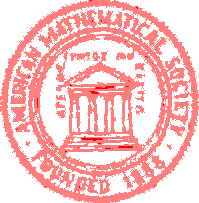Artificial intelligence and machine learning
Research Article
Recovering text sequences using deep learning models
Igor Victorovich Vinokurov
| Financial University under the Government of the Russian Federation, Moscow, Russia | |
 igvvinokurov@fa.ru igvvinokurov@fa.ru |
Abstract. This article presents the results of the formation, training and performance evaluation of models with the Encoder-Decoder and Sequence-To-Sequence (Seq2Seq) architectures for solving the problem of supplementing incomplete texts. Problems of this type often arise when restoring the contents of documents from their low-quality images. The studies conducted in the work are aimed at solving the practical problem of forming electronic copies of scanned documents of the «Roskadastr» PLC, the recognition of which is difficult or impossible with standard means.
The formation and study of models was carried out in Python using the high-level API of the Keras package. A dataset consisting of several thousand pairs was formed for the purpose of training and studying the models. Each pair in this set represented an incomplete and corresponding full text. To evaluate the quality of the models, the values of the loss function and the accuracy, BLEU and ROUGE-L metrics were calculated. Loss and accuracy made it possible to evaluate the effectiveness of the models at the level of predicting individual words. The BLEU and ROUGE-L metrics were used to evaluate the similarity between the full and reconstructed texts. The results showed that both the Encoder-Decoder and Seq2Seq models cope with the task of reconstructing text sequences from their fixed set, but the Seq2Seq transformer-based model achieves better results in terms of training speed and quality. (Linked article texts in English and in Russian).
Keywords: deep learning models, encoder-decoder, sequence-to-sequence transformer, text recovering, BLEU, ROUGE-L, Keras, Python
MSC-2020 68T20; 68T07, 68T45
68T20; 68T07, 68T45
For citation: Igor V. Vinokurov. Recovering text sequences using deep learning models. Program Systems: Theory and Applications, 2024, 15:3, pp. 75–110. (in Engl. In Russ.). https://psta.psiras.ru/2024/3_75-110.
Full text of bilingual article (PDF): https://psta.psiras.ru/read/psta2024_3_75-110.pdf (Clicking on the flag in the header switches the page language).
The article was submitted 03.03.2024; approved after reviewing 14.04.2024; accepted for publication 15.08.2024; published online 23.09.2024.


